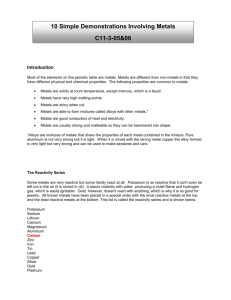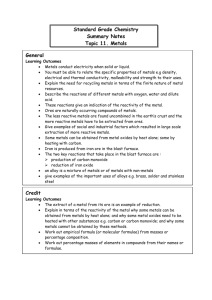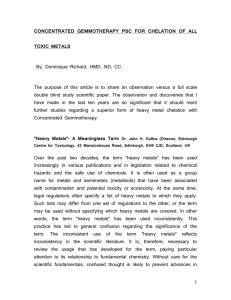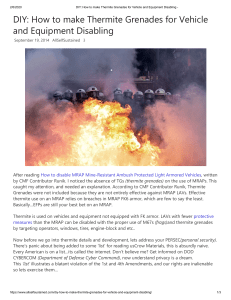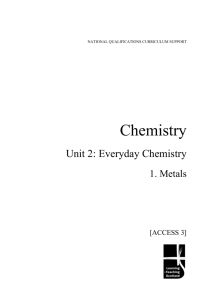The World of Chemistry
advertisement
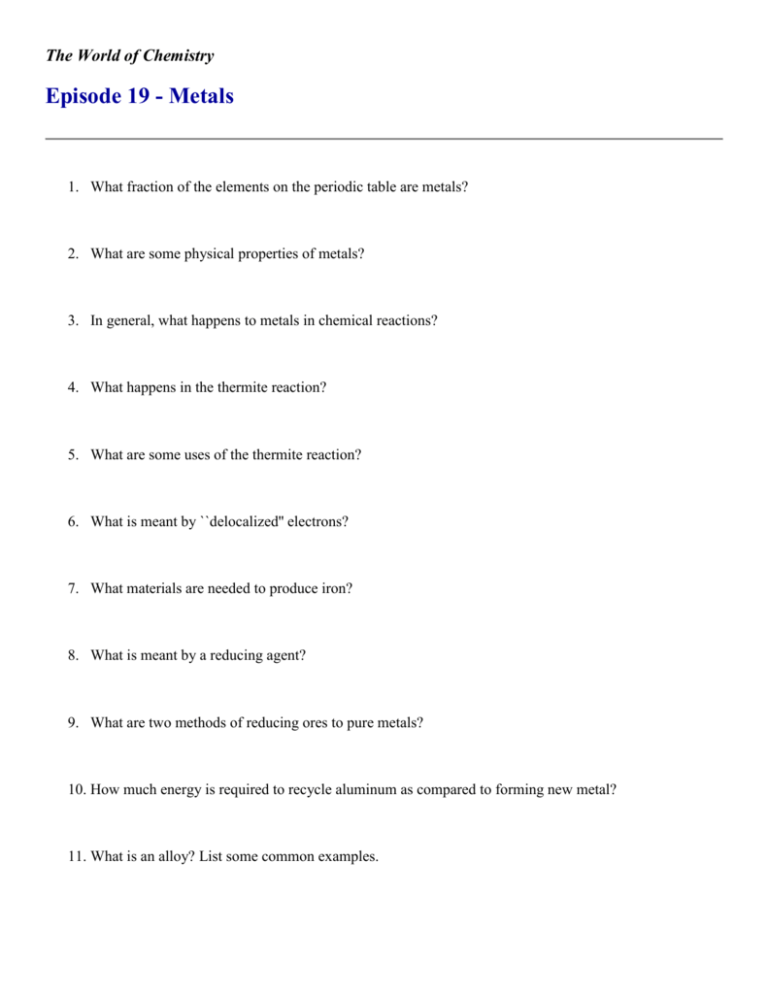
The World of Chemistry Episode 19 - Metals 1. What fraction of the elements on the periodic table are metals? 2. What are some physical properties of metals? 3. In general, what happens to metals in chemical reactions? 4. What happens in the thermite reaction? 5. What are some uses of the thermite reaction? 6. What is meant by ``delocalized'' electrons? 7. What materials are needed to produce iron? 8. What is meant by a reducing agent? 9. What are two methods of reducing ores to pure metals? 10. How much energy is required to recycle aluminum as compared to forming new metal? 11. What is an alloy? List some common examples. Answer Key 1. What fraction of the elements on the periodic table are metals? 3/4 2. What are some physical properties of metals? Conductivity, ductile, malleable 3. In general, what happens to metals in chemical reactions? They give up electrons. 4. What happens in the thermite reaction? Molten iron is produced from aluminum and iron oxide. 5. What are some uses of the thermite reaction? Welding rails and underwater welding 6. What is meant by ``delocalized'' electrons? Electrons that are free to move through a metal. 7. What materials are needed to produce iron? Iron ore, coke, limestone and heat 8. What is meant by a reducing agent? A material that allows an ore to be reduced to a metal. 9. What are two methods of reducing ores to pure metals? Chemical and electrochemical reactions 10. How much energy is required to recycle aluminum as compared to forming new metal? Five percent 11. What is an alloy? List some common examples. A mixture of metals. Brass, bronze, steel.
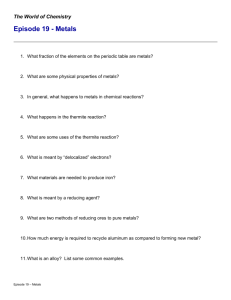


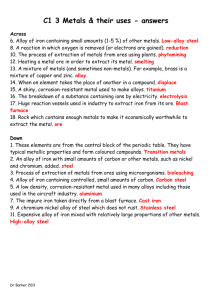
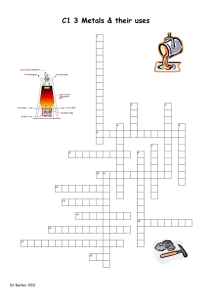




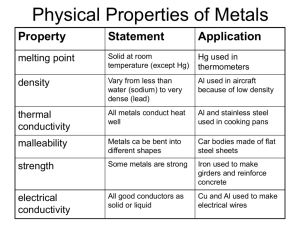
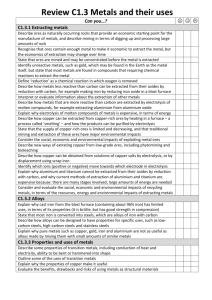
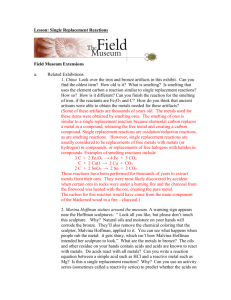
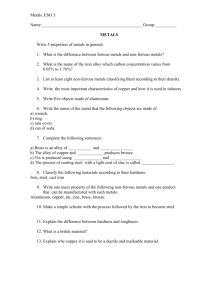
![AGE 301 [Farm Mechanics]](http://s3.studylib.net/store/data/009717336_1-d652eb003a5d66f8a922a9f172ff4576-300x300.png)
